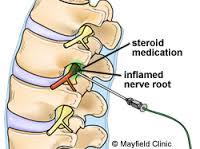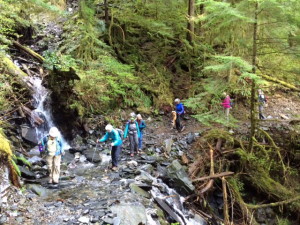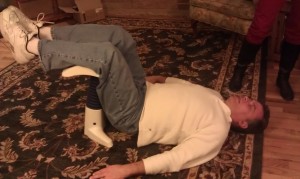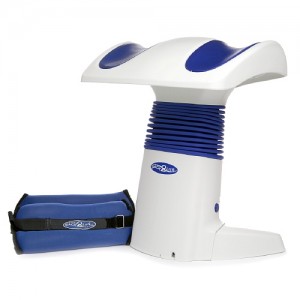Gentle Reader,
Sciatica, sciatica, sciatica. On every hand I hear people complaining about sciatic pain, drop foot, back difficulties and arthritis in general. A vital member of my Wednesday hiking group is suffering terribly from sciatica these days so I decided to revisit a post I drafted several years ago when I was having the same problem. Thankfully, I have no sciatica pain at this time. When I first wrote this draft, I was suffering terrible and thought I might have to end my hiking. Here is what I wrote back then, before surgery and rehabilitation.
I have had more acute sciatic pain plus a long stretch of time at home ( so I decided to focus on discovering the cause. What would a medically trained physician have to say about my condition?
I imagine most people begin in the doctor’s office. You, who read my posts, may be among those who seek alternative care first. I have done Feldenkrais, Deep tissue sports massage, private pilates, Myo Facial Release, Raiki, Alexander, Therapeutic Yoga, chiropractic, Physical Therapy—what am I forgetting? Ah, yes, my wonderful team at the Xgym, half the time and twice the results. Personal trainers who tailor my 25 minute workout to build upper body, leg and core strength while protecting my back.My first injury happened in 1989 with a major exacerbation in 1992. Back then I did all the above and my doctor of choice was Stan Herring, a neurosurgeon who now limits his practice to the University of Washington Huskies and the Sea Hawks. He’s the doctor who looked at my x-rays and a later MRI and asked if I’d come in a wheelchair. “Get strong, Betsy. Your bones are no good for surgery so get strong.”
If you know me and see me on Face book, you know that is exactly what I have been doing. Weekly hiking, daily walking up and down the hills of West Seattle, long walks in exotic places in the off season, cross country skiing and snow shoeing when we have snow in our Cascades.
The sciatic has gotten progressively worse affecting my right leg and causing numbness and sometimes extreme pain. I put myself under the care of Dr. Ren at the Polyclinic. She is a physical medicine doctor who specializes in keeping people moving who suffer from back related problems (among other things). She confirmed that I have extreme spinal stenosis and osteoarthritis, two herniated disks at L4 and L5. She sent me to physical therapy for eight session. As has been true with previous visits to PT’s, I had fun with those young specialists and enjoyed their stretching, icing and exercises, but nothing beneficial came of it. In fact, the gross motor activities prescribed may have made my condition worse.
Next step was to get the shot of cortisone in the L5 area where the narrowing is so small, it’s a wonder any nerve impulses get through at all. I’ve been scheduled for this procedure three previous times and canceled each time. I wasn’t ready. Dr. Ren did a fabulous job. Her needle found the spot producing an electric shock that sprung my leg all the way to my two middle toes to life with a jerk. After I caught my breath, I congratulated her.
The first day I felt wonderful and so moved stuff around in the garage. Stupid. Without the pain, I realized my gait was completely cattywampus—right hip collapsing with each step, left leg struggling to hold me up. Something whispered to me, “Go back to Becci Parsons and let her healing hands remind you how to stand and walk and sit and roll over.” Becci is the Feldenkrais therapist who got me back on my feet after the herniation so many years ago. She is a former dancer and has the same “keep moving” spirit I have. She has suffered from a similar herniation and has ended up with surgery. She can move fluidly with nearly equal strength on both sides (her right side has some weakness and lack of nerve response when her foot gets caught).
Becci, after three session, has me sitting on my sits bones with a natural curve in my lower spine, pressing one heal to the floor on the exhaling breath while lifting the right heal ever so slightly. I am paying attention to the distance between my arm pit and my hips on both sides, keeping that distance equal. I am paying attention to every muscle group that tries to help lift that right heal. Tiny movements with laser focus to re-pattern the injured nerves and muscles. She checked out my gait with the hiking sticks and said it was remarkable how my shoulders remained even, my right side did not collapse and my left hip didn’t swing out. That decision on my part to walk everywhere with hiking sticks was the best self care for my condition. It gets me a seat on a crowded bus, too.
I have further information from a new MRI although Dr. Ren’s assistant Diana and further narrowing has occurred since the pictures in 2014. I am now several weeks out from the cortisone shot and sadly report that the left leg is painful and weak as well as the right leg.Monday morning I will have a surgery consultation with Becci’s neurosurgeon, Dr. Nora. I have some hope that he can help me.
The shot did lessen the pain, so much so that I stopped taking Shaklee’s Pain Relief Complex which inhibits the pain path without any side effects. Low and behold, other arthritis pain showed up in my hands. I’m back on the Pain Relief and have a prescription for a pain reliever that I have not tried yet.The most difficult aspect of this saga is that I cannot hike for longer than a half hour without sitting down. I am in deep mourning for the loss of this activity with my pals. I can’t hold them back. What a struggle to let go of something so dear to my heart and body. I have tried walking in the swimming pool to get my heart rate up and feel those endorphins that come from exercise, but it didn’t do much for me to be indoors.
There is something about spending a day in the wilderness every week that kept my spirit soaring and my sense of well being strong. I’ll keep you posted on this transition to something that satisfies without excruciating pain.
I share my pain, suffering and healing stories in case they resonate with something you are going through, or someone you know. If you have any interest in connecting with any of the practitioners I have used, please follow the hot links to them. If you are interested in trying the supplements and dietary changes that have been so helpful to me, please check out this post in particular. If you have questions or comments from your own experience, I and my readers would love to hear from you.
Thanks for reading. Share your sciatica stories with me and my readers. Feel free to contact any of the healthcare providers I mentioned (Becci Parsons, Feldenkrais: Cedron Sterling, Myo Fascial Release) in this post. Happy hiking (and whatever you do to stay active.)
Be well, Do well, and Keep moving.
Betsy Bell
Betsy Bell Enterprises LLC, 206 409 5940






 Cartilage is 65 to 80 percent water, so staying hydrated is important for the health and lubrication of your joints. Maintaining proper hydration is even more important for individuals who suffer from gout. Water helps flush uric acid out of the body, and studies suggest staying hydrated may help prevent flare-ups. It isn’t necessary to count the number of glasses of water you drink in a day — the latest research suggests that if you take time to drink a glass whenever you feel thirsty, you’ll probably do fine. You are already drinking enough water, which is important for managing your arthritis. To spice things up, you might want to try flavoring your water with fresh fruit slices or drinking unsweetened green tea or herbal tea — there are so many delicious and fun varieties. And be sure to avoid sugary drinks like soda, sweetened water, fruit drinks, sweet tea, and froufrou coffee concoctions.
Cartilage is 65 to 80 percent water, so staying hydrated is important for the health and lubrication of your joints. Maintaining proper hydration is even more important for individuals who suffer from gout. Water helps flush uric acid out of the body, and studies suggest staying hydrated may help prevent flare-ups. It isn’t necessary to count the number of glasses of water you drink in a day — the latest research suggests that if you take time to drink a glass whenever you feel thirsty, you’ll probably do fine. You are already drinking enough water, which is important for managing your arthritis. To spice things up, you might want to try flavoring your water with fresh fruit slices or drinking unsweetened green tea or herbal tea — there are so many delicious and fun varieties. And be sure to avoid sugary drinks like soda, sweetened water, fruit drinks, sweet tea, and froufrou coffee concoctions. I know you don’t smoke, but I just wanted to share with you a few good reasons to stay smoke-free: Smoking delivers toxins throughout the body, causing inflammation and increasing the risk of arthritis. In one study, smokers were more than twice as likely to develop rheumatoid arthritis than people who didn’t smoke. In addition, researchers from a multicenter study reported in 2005 that smokers had a greater risk of osteoarthritis of the knee, possibly because smoking interferes with the body’s ability to repair its own cartilage. The bottom line is that staying smoke-free is a wise choice!
I know you don’t smoke, but I just wanted to share with you a few good reasons to stay smoke-free: Smoking delivers toxins throughout the body, causing inflammation and increasing the risk of arthritis. In one study, smokers were more than twice as likely to develop rheumatoid arthritis than people who didn’t smoke. In addition, researchers from a multicenter study reported in 2005 that smokers had a greater risk of osteoarthritis of the knee, possibly because smoking interferes with the body’s ability to repair its own cartilage. The bottom line is that staying smoke-free is a wise choice! you’re already there! Being overweight can put added physical stress on your joints, which can aggravate arthritis (particularly osteoarthritis) and increase your levels of pain. An unhealthy weight can also promote inflammation, which as I’ve mentioned is the root of arthritis. Another reason to keep eating right and exercising!
you’re already there! Being overweight can put added physical stress on your joints, which can aggravate arthritis (particularly osteoarthritis) and increase your levels of pain. An unhealthy weight can also promote inflammation, which as I’ve mentioned is the root of arthritis. Another reason to keep eating right and exercising! arthritis. It can help you lose or maintain weight, which reduces the overall stress impact on joints. Strong muscles can absorb shock from daily movements, keep joints stable, and protect against additional joint injury. Stretching and yoga can improve flexibility and range of motion and reduce joint stiffness. Swimming and water aerobics allow free movement without added stress on the joints. Walking is another manageable, low-impact form of aerobic exercise appropriate for most individuals with arthritis. All good reasons to maintain your active lifestyle!
arthritis. It can help you lose or maintain weight, which reduces the overall stress impact on joints. Strong muscles can absorb shock from daily movements, keep joints stable, and protect against additional joint injury. Stretching and yoga can improve flexibility and range of motion and reduce joint stiffness. Swimming and water aerobics allow free movement without added stress on the joints. Walking is another manageable, low-impact form of aerobic exercise appropriate for most individuals with arthritis. All good reasons to maintain your active lifestyle!